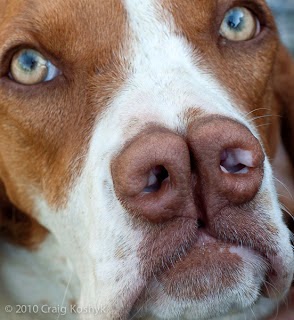Early Spring 1986 my mother chose to visit us in Turkey. Well, no one should visit this fabulous country and miss out on a trip to Cappadocia (though many do!). Knowing the weather would be forbidding this time of year, we decided to brave the elements and go anyway. We checked into a wonderful cave hotel in Urgup, in the snow, and settled in with my mother in one room with our twin 5 year old daughters, and my husband and I in another.
Snow is always beautiful, but when you combine it with the spectacular landscape of Cappadocia, it's absolutely mesmorizing and thrilling! My children do what all children want to do in the snow, venture outside and play. And this was our introduction to, the Anatolian Shepherd, or, as it is called by the Turks, the Kangal dog. First of all, they are huge! As soon as our daughters stepped outside their room, they were greeted by a mother and her two pups. This was, what, 28 years ago? Yet I remember as though it just happened. The mother walked over to one of my daughters and licked her on the face. I remember the dogs tongue, which practically covered my child's entire face. And thus began a long history of, and love for, this amazing breed of dog.
Fast forward 20 years. My daughter, the one who had her face licked, is now married to a man who insisted on a German Shepherd as a pet. True to her roots of having grown up in Turkey, my daughter insisted on an Anatolian Shepherd. A what? An internet search began for a breeder. But not just any breeder. It had to be a breeder of Anatolians that looked just like the ones our daughter remembered from her years in Turkey; one with the distinct markings of sandy and white colored coat, with black nose and black ears. There are several breeders throughout the US, but none that my daughter found quite met her level of expectation. By the way, the Kangal is considered a natural resource of Turkey and they are no longer allowed to be taken out of the country.
And then it happened! She found a breeder, not clear across the country, or out west as she expected, but just a little over an hour down the road south of us in Attala, Alabama. I was invited to go with them to make their selection (They would not tell me what the puppy cost.), and we returned with a beautiful Anatolian Shepherd puppy, with all the right markings, and with a Turkish name, Konya, which I got to choose.
Anatolian Shepherds are raised to take care of flocks of sheep. They are found throughout the Anatolian Plain in Turkey, usually alongside a flock. They wear spiked collars for the purpose of protecting their necks from wolves. Throughout Turkey and other parts of Central Asia, they are also trained to babysit. They are exceptionally intelligent dogs and somewhat.........emotional.
May I share a few stories about the Kangal, learned from my Turkish friends? For example, they can tell the difference in a person who is good, and one who is evil. They will alert their owner when a somewhat "shady" person enters the room. They will track a wolf for days that has threatened their flock of sheep, kill the wolf, and then return to the flock. They have superior sight and hearing, and are very strong and rugged, bred for the harsh climate of parts of eastern Turkey, and very well adapted to a nomadic lifestyle. Their life span is unusual for a large breed of dog - 12-16 years. They are superb animals! And when I return to Turkey every year, I always enjoy riding through the countryside of the east, and seeing these magnificent animals tending their flocks.
The Tarsus dog has a snout like a pig. I do not know much about this breed, but from the time they are a puppy, they are raised for hunting and are exceptionally good at it. Honestly, the first time I saw this animal, the nose was the feature I noticed before what was connected to it, and I was so caught off guard I thought it was a pig! I do not think the dog is very prevalent, or perhaps they are safely guarded by their owners. For ten years I lived just 40 minutes from Tarsus, and I do not remember ever seeing this dog until a return trip 3 years ago. Ok, on to the cat lovers. The Van cat is also considered to be a natural resource of Turkey. They originate in the far eastern part of the country, around the Lake Van area. They are quite beautiful and have one blue eye and one brown or green eye. Van cats are pure white with a tabby colored tail. Like the Kangal, they are no longer allowed out of the country.
Obviously I spent more time on the Anatolian Shepherd than the Tarsus dog and Van cat. There are two reasons. First of all, I know more about the Anatolian than the other two breeds. And, second, I have an Anatolian for a granddog, and you know how we grandparents can be!



